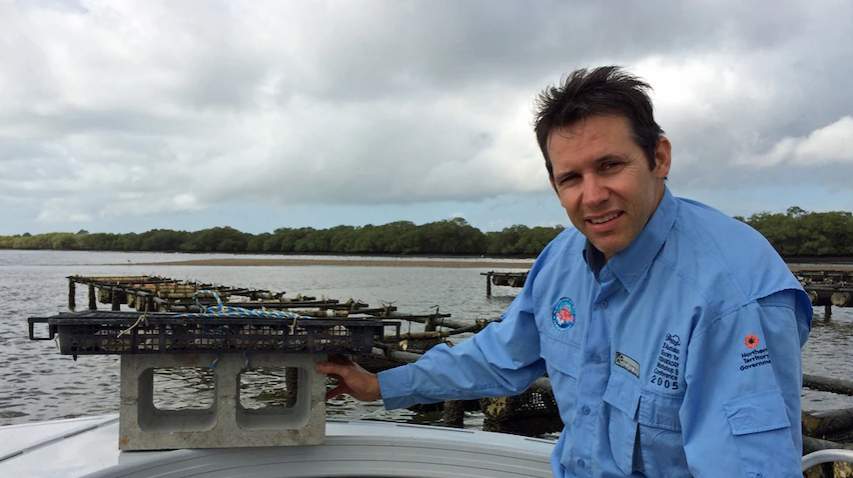Everyone’s heard of the Great Barrier Reef, but did you know Brisbane was built on the back of a thriving reef, that’s disappeared into the history books?

Now there is a community driven program to restore the reef and improve Moreton Bay’s water quality, fish stocks and seagrass in the process.
When marine biologist Dr Ben Diggles went to help the last remaining oyster farmer in the Pumicestone Passage with his struggling crop, he discovered the remnants of “the lost shellfish reef”.
They’re essentially the lungs of the estuaries.
“The oyster industry in the Pumicestone Passage was one of Queensland’s first,” Dr Diggles said.
“The early buildings in Brisbane were actually built using cement that was made from lime that was made from crushed oyster shells.
“Traditional owners were using them for many thousands of years.”
But clearing in the catchment, sediment, sewage, and nutrients flowing from developments and farmland have taken a toll on oyster stocks, smothering the shellfish during flood events.
Oyster stocks suffering: expert
Dr Diggles estimates that just 4 per cent of the original reef remains and that fish stocks have suffered as a result.
“The industry is a shadow of itself,” he said.
Now SEQ Catchments, traditional owners, the Pumicestone Passage Fish Restocking Association, Moreton Bay Regional Council, National Landcare programme, Unitywater and Fisheries Queensland are working together with the hope of reviving the reef.
Funding has been granted to work on securing permission to trial the restoration of shellfish stocks in the Moreton Bay Marine Park.
Similar projects have already had some success in the United States and are being researched interstate.
“Oysters and shellfish: they form an important component in the base of the food chain,” Dr Diggles said.
“They’re essentially the lungs of the estuaries.
“They can filter the water and provide food and shelter for crabs and fish, so they underpin the health of our fisheries.
“They help restore seagrass by cleaning the water.”
Oysters improve water quality
But according to Dr Diggles, Pumicestone Passage is under increasing pressure. The State Government has approved a development for 50,000 people, west of Caloundra.
“It’s sort of a situation of a death of a thousand cuts,” Dr Diggles said.
“Every development by itself doesn’t necessarily cause a major decline, but with the sheer weight of development that’s occurred in the past and what’s planned in future, it’s very important that we look to this sort of active intervention underwater.
“Previously I think a lot of what’s been happening underwater has been out of sight, out of mind.
“But with the recent research into these shellfish reefs it’s become very clear that if we don’t try to put them back into the system , we’re really missing a link that’s important at the base of the food chain.”
Joondoburri elder, Fred Palin, is excited about the future.
“What we really need, is a billion oysters out there, that’s what we really need to make a big impact,” he said.
“But firstly we’ve got to do the research.
“We’ve got to find out QX disease resistant oysters, we’ve got to find out what’s going to survive.”
source: www.abc.net.au
